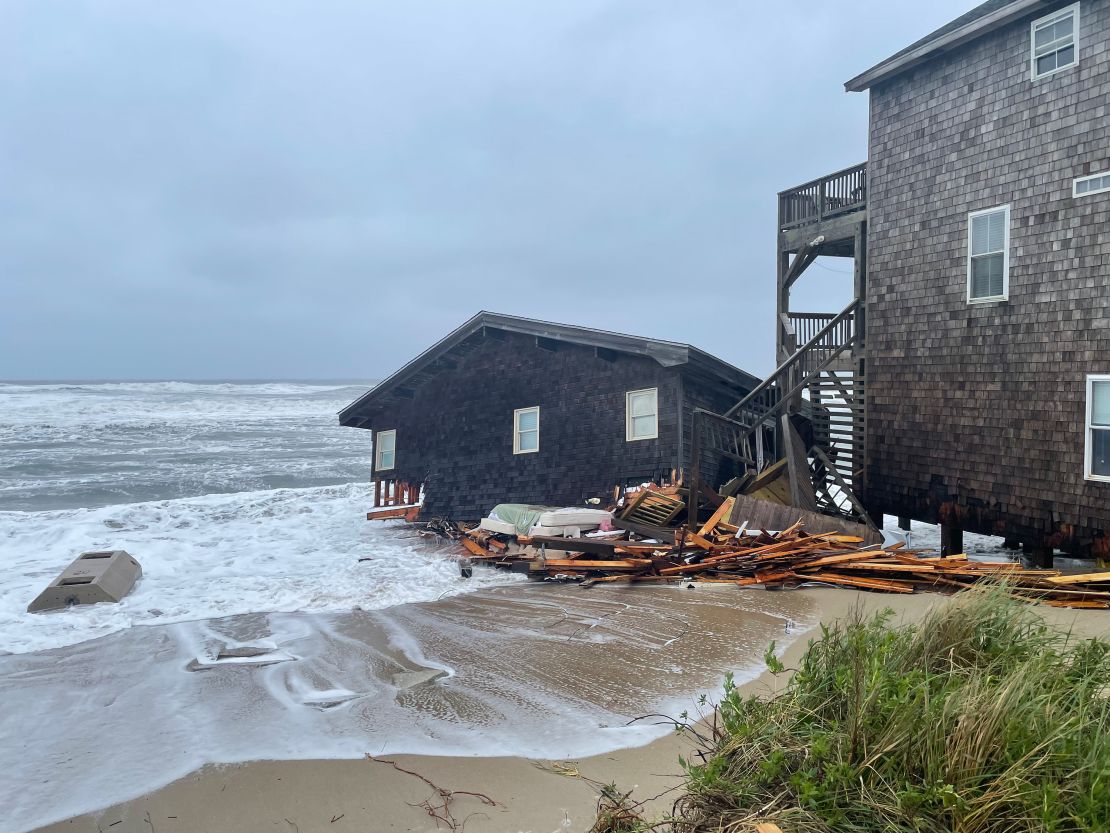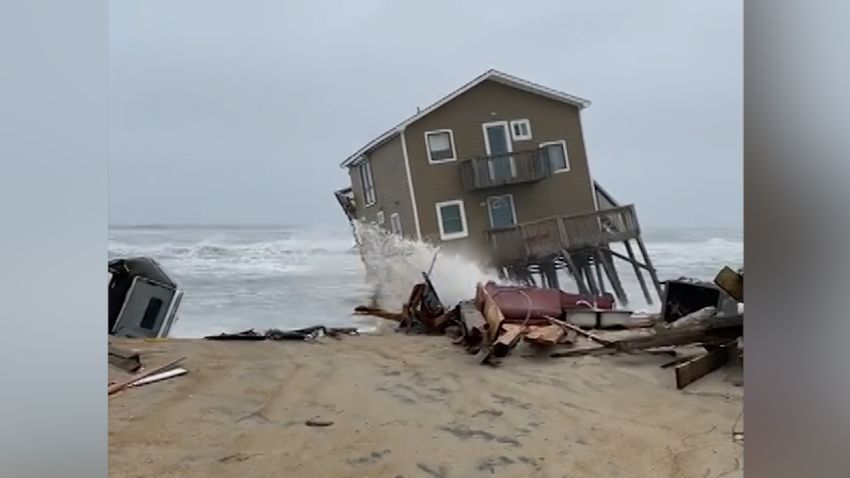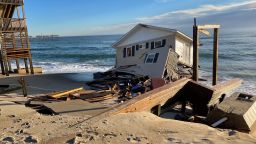Two beachside homes in North Carolina’s Outer Banks collapsed from high water levels and beach erosion on Tuesday, and more could collapse in the coming days, according to the Cape Hatteras National Seashore.
The two homes in Rodanthe were both unoccupied at the time, the agency said. Video from the agency showed the demise of one home as ocean waves caused the stilts supporting the house to teeter and fall.
In February, another home in Rodanthe also collapsed, spreading debris across miles of beaches.
The collapses are part of what officials worry could be a growing issue amid severe weather this week as well as longer-term concerns like rising sea levels and beach erosion on the border island of Cape Hatteras.
“Unfortunately, there may be more houses that collapse onto Seashore beaches in the near future,” David Hallac, superintendent of the National Parks of Eastern North Carolina, said in a statement. “We proactively reached out to homeowners along Ocean Drive in Rodanthe after the first house collapse and recommended that actions be taken to prevent collapse and impacts to Cape Hatteras National Seashore.”

The collapses occurred on a pristine stretch of beach emblematic of why the Outer Banks is a major tourist destination every summer. Yet coastal communities like those on the Outer Banks face increasing risk due to sea level rise, worsening erosion and high tide flooding.
Coastal communities in the Northeast have seen a significant uptick in tidal flooding, including around Washington, DC and Baltimore and Annapolis, Maryland. The National Oceanic and Atmospheric Administration has noted that by 2030 there will be seven to 15 days of high tide flooding nationally. By 2050, the frequency increases to 25 to 75 days.
Sea level in this part of coastal North Carolina has risen roughly 3 inches since the early 1980s, according to NASA. Coastal erosion costs around half a billion dollars each year in the form of deteriorated structures and land that is lost to the rising ocean.
Homes had been in danger for months
The collapses in Rodanthe occurred during severe weather and flood-level high tides.
In a release Saturday, Cape Hatteras National Seashore said the Outer Banks area was forecast to receive severe weather starting on Sunday, including strong winds, powerful surf, dangerous rip currents, significant beach erosion and ocean overwash.
High tides were forecast to be above flood stage through at least Wednesday, the Cape Hatteras National Seashore said earlier this week. “This recent ocean front water level forecast is concerning,” the post said.
Parts of Cape Hatteras are under a coastal flood warning and high surf advisory until Thursday, according to the National Weather Service.
The beach near Ocean Drive has been closed and authorities will also be closing Ocean Drive in fear that other houses might collapse.
A spokesperson for the Cape Hatteras National Seashore said that the houses that fell Tuesday were determined to be unsafe and in danger of collapse months ago by the Dare County Planning Department. The storm system hastened the collapses, but the stretch of beach adjacent to Ocean Drive has been closed since February due to the hazards from the houses, the spokesperson said.
North Carolina Highway 12, which runs through the Outer Banks, remains closed from the Oregon Inlet to Rodanthe, according to the North Carolina Department of Transportation.
CNN’s Eric Levenson, Rachel Ramirez and Amanda Watts contributed to this report.


